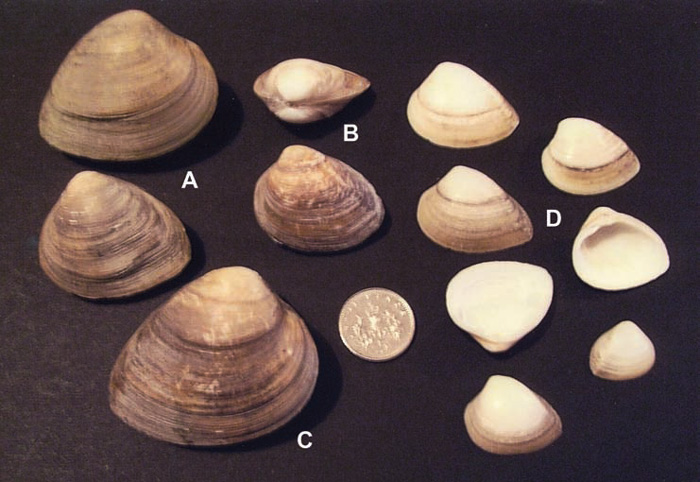|
The bivalve Rangia cuneata (Sowerby, 1831) (Mactridae) is a native of the Northwest United States and Canada, a species at home in slow moving, brackish water and marshes. It is also now present in waters around Baltimore, Maryland in the Eastern USA (so I am led to believe), no doubt introduced from ship ballast water. In 2007 I was sent a bivalve specimen from a friend in Denmark that was collected in December 2006 near the recently excavated and now completed Doeldok at Doel, Belgium. Although the locality details were provided the specimen was not named. Comparison with two more unnamed specimens from the Verrebroekdok of Kallo collected in April 2005 proved it to be of the same species. Further specimens from an unknown dock near Antwerp were also the same (the dock systems at Doel, Kallo and around Antwerp are fed by the tidal waters of the river Scheldt with an extensive large estuary into the North Sea). A bit of research and some illustrations led me to conclude that these shells were Rangia cuneata, an alien species to Belgian waters, probably arriving there through the extensive docks via the eastern seaboard of America in ship ballast waters. On 5th October 2009 whilst visiting Belgium to collect fossil molluscs from old dock excavation workings, I visited a site at Hoevenen, Stabroek, off the A12 highway near Antwerp. This site contained material from a recently deepened older dock to those at Doel and Kallo. Among the fossil material were a number of modern shells including single valves of R. Cuneata. All were in good condition but not articulated as my other specimens (possibly due to the excavation, transport and dumping process?). Editor’s note:- Identification was also confirmed by Anna Holmes (National Museum of Wales) using specimens of R. cuneata (from the Gulf of Mexico!) in the museum’s collections. It would seem that with the number and varying size of specimens being found over a wide area and over some time, that R. Cuneata has become well established in the dock areas and is thriving. It has probably got into the newer docks via the Scheldt tidal & current systems, so does this mean that it could survive in the tidal river and estuary to the North Sea. I have no specimens from those areas to prove that it can but I suspect that it could! What are the chances of it appearing in UK waters at some time, at somewhere like Southampton docks or the Thames, who knows !!? |

Figure 1: map of dock complex around Doel and Kallo near Antwerp, Belgium
|

Figure 2 Rangia cuneata specimens from:-
A)Verrebroekdok, April 2005
B) un-named dock, Antwerp, June 2005
C) from Doeldok, December 2006
D) Hoevenen, Stabroek, Sept. 2009
